First off, to be clear, I’m talking about a Diplexer, the small device that will fit in your pocket and costs < $60, that is used to combine 2-meter and 70-cm rigs to use a single antenna feed-line. However both Comet and Diamond call these things Duplexers which are usually large multi-cavity devices that cost > $1000 that certainly won’t fit in your pocket.
Some discussion on the AMSAT forum recently has centered around eliminating those pesky 3rd harmonics from inexpensive HTs that don’t meet FCC specs. Folks were complaining of having 70-cm receive desense when transmitting on 2-meters.
A suggestion was made to use a Diplexer, since it is not much more than a LPF on the low-frequency port and a HPF on the high-frequency port. I was curious if they met their performance specs and if it made a difference if the unused port was terminated or not. The executive summary is Yes, and Yes (although termination isn’t a huge deal).
I used my recently calibrated Siglent SSA3021X to test a Comet CF-4160J “Duplexer”. I normalized my SA and the interconnection cables I would be using, then hooked a Comet DF-4160 “Duplexer” into the path with the High Frequency Port terminated as seen in the photo below.
When I swept the Low Frequency Port side, the response was pretty much as expected from Comet’s specifications. There was about 0.12 dB of insertion loss and the 70-cm response was down -55 dB.
I disconnected the 50 Ohm termination and observed a rather dramatic change in the response as seen below. Note the rather pronounced dip around 300 MHz. The loss increased slightly to -0.13 dB, and the rejection was reduced by 3 dB to -52. So the advice would be to terminate the High Frequency Port.
Just for grins I swapped the Common Port and Low Frequency Port and found the results to be essentially identical to my first test, so which way you hook it up doesn’t matter, as you might expect.

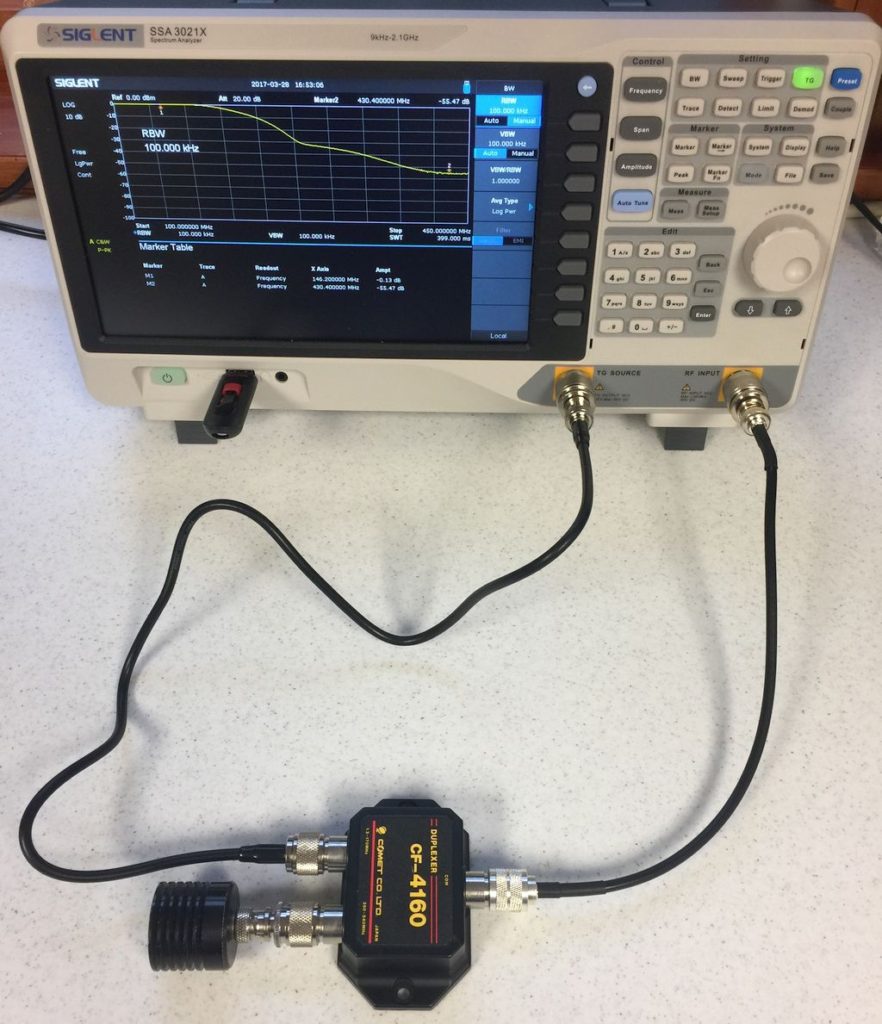
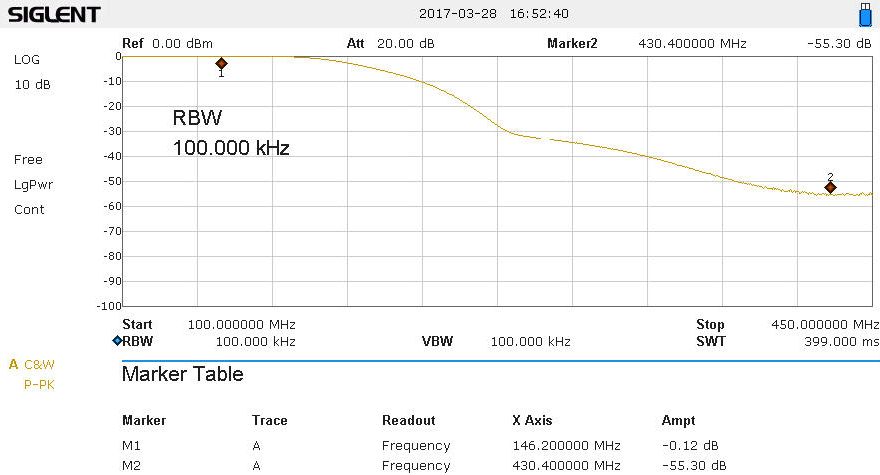
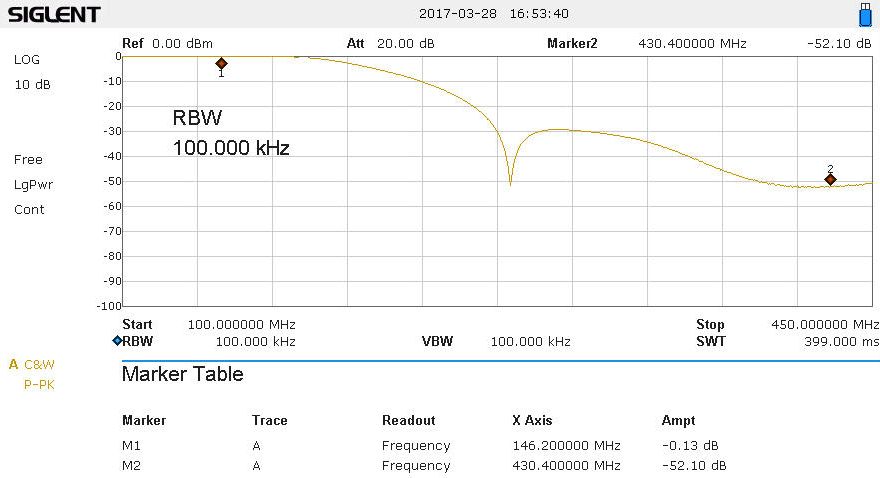
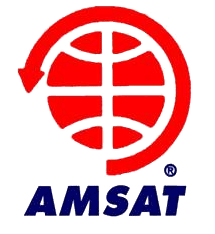
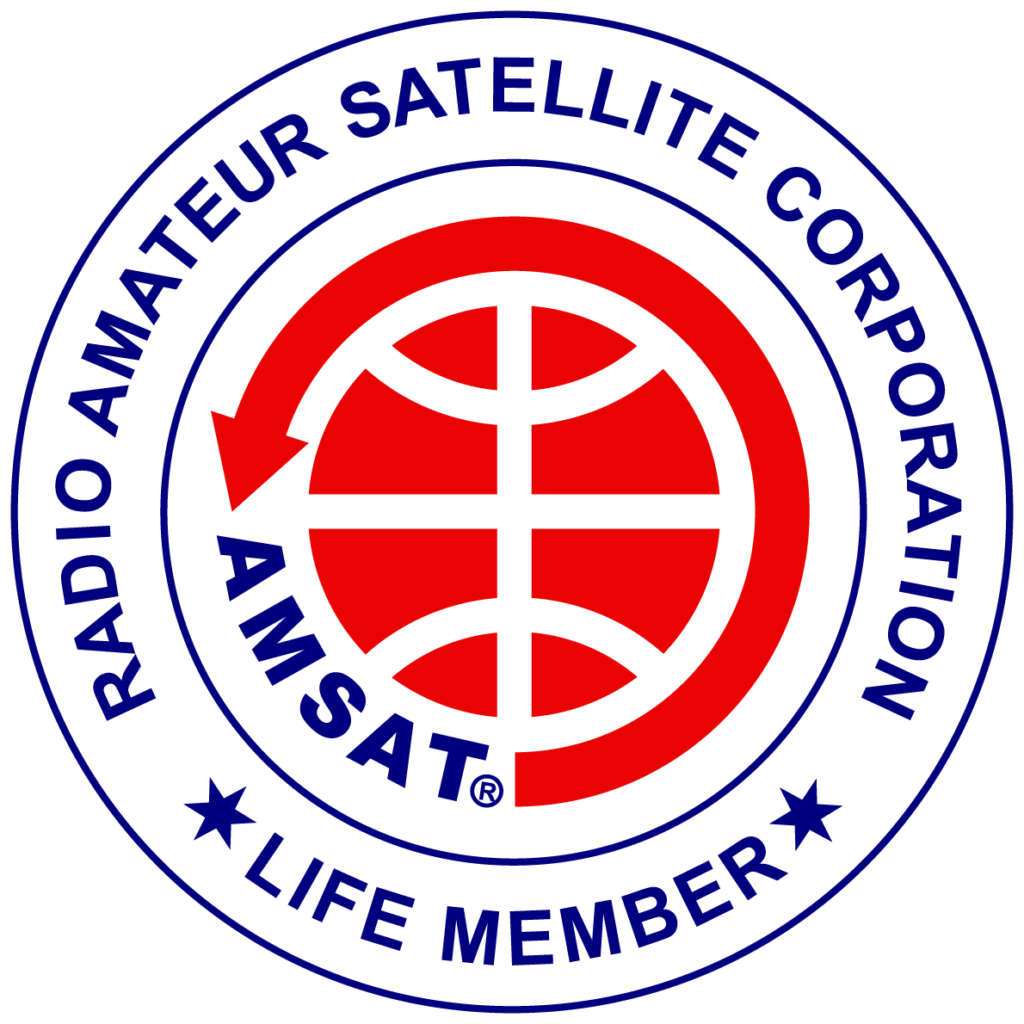
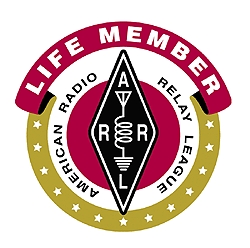





Great Post! Well explained about the Using a Diplexer and (Duplexer) it’s very helpful for me thanks for sharing it keep posting like this.